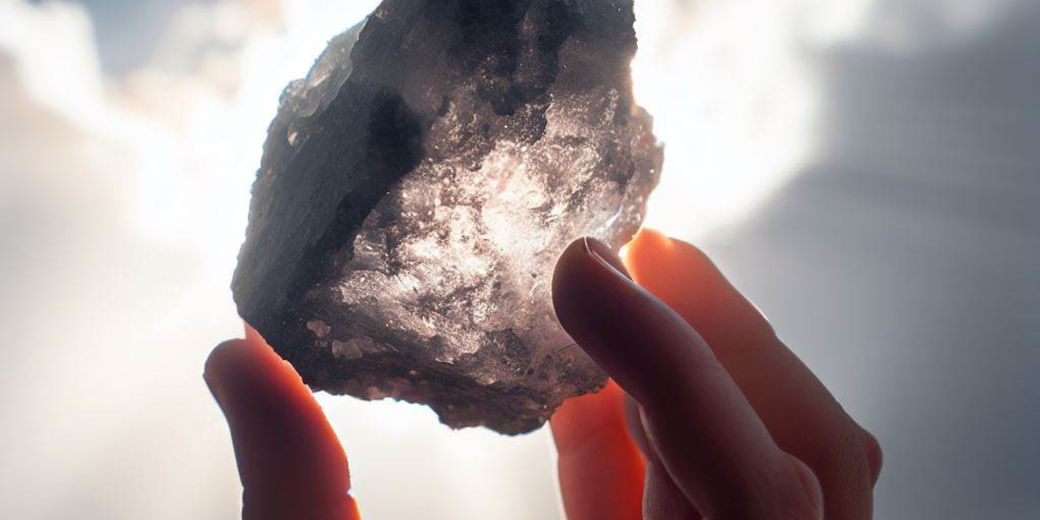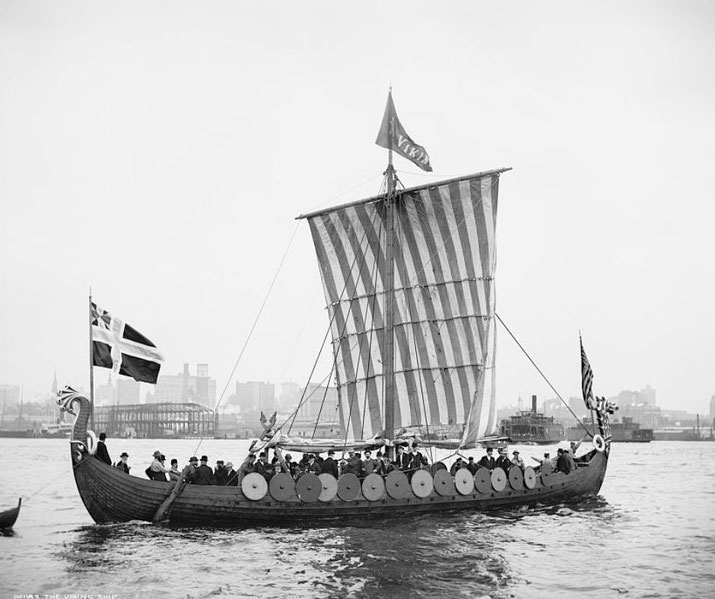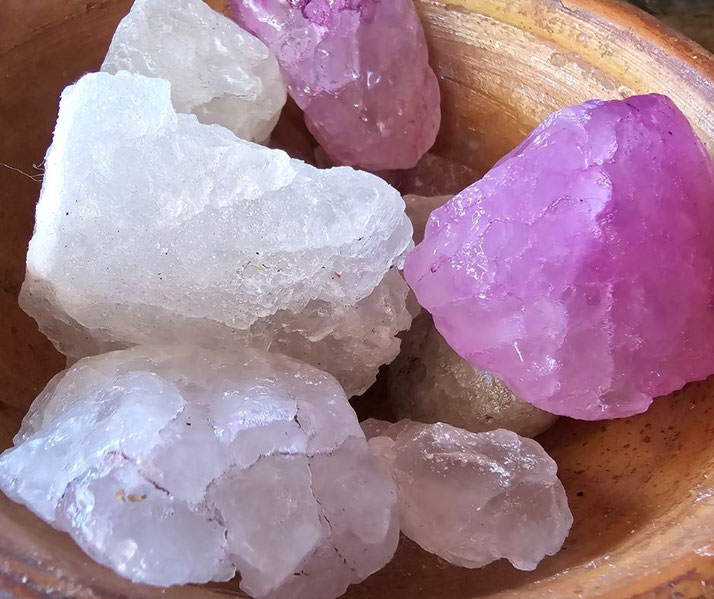The mysterious 'sunstone' that helped the Vikings reach America

Long before magnetic compasses guided European ships across the Atlantic, Norse sailors crossed open ocean by methods that puzzled later navigators.
One of the most interesting parts of Viking navigation may have been their use of a sunstone, a crystal that helped them find the sun’s position even when it was hidden by clouds or below the horizon.
Even though no archaeological evidence survives to show the exact instruments Vikings used, medieval texts and modern tests suggest this crystal could have offered a useful solution to a major problem in early medieval navigation.
What was the Viking sun stone?
The clearest reference to the sunstone appears in the Rauðúlfs þáttr, a short Icelandic saga, likely written in the late 13th century.
It describes that King Olav Haraldsson used a stone to find the sun’s location on a cloudy day.
This source, which was written long after the Viking Age, uses words that focus on meaning rather than detail.
The saga says the king “held the sunstone up and saw where the sun shone from the stone.”
This strange story has led to centuries of guessing, especially among historians and scientists who have tried to identify what mineral could copy this effect and whether the Norse really relied on such a tool during their sea voyages.
Researchers now believe that the sunstone may have been a form of calcite, specifically Iceland spar, which is a clear crystal found in Iceland and parts of Scandinavia.
Iceland spar has a quality called birefringence, which splits incoming light into two beams.
When held up to the sky and turned, it lets a user detect the direction of polarised light, which scatters in known patterns based on the sun’s position, even under cloudy skies or just after sunset.
By turning the crystal and comparing how bright each beam appeared, a skilled navigator could estimate where the hidden sun was with good accuracy.
In 2011, scientists from Eötvös Loránd University in Hungary, who were led by Gábor Horváth, tested this idea in a lab.
Their experiments showed that even under cloudy skies, a sunstone user could find the sun’s location within a range of error of 1 to 5 degrees.
Other minerals, such as cordierite and tourmaline, have also been suggested as options for the Viking sunstone because of their ability to polarise light and where they lived.
Although Iceland spar is often mentioned, the existence of multiple suitable crystals shows that Norse navigators may have had several options based on their region and trade links.

How did Vikings use the sun stone?
The Viking reliance on natural signs was already well-established. They used the flight patterns of sea birds, the direction of ocean swells, changes in water colour, and coastal landmarks to chart their courses.
However, these methods became unreliable once ships entered open waters such as the North Atlantic, where dense fog and long hours of twilight in summer made navigation difficult.
This is particularly important when considering the voyages to Greenland and Vinland, which required travel across hundreds of kilometres of open sea.
A sunstone would have enabled Norse sailors to maintain an east-west course by estimating midday, even when the sun was not directly visible.
It is likely that sunstones were used with other tools, such as sun compasses or shadow boards, to preserve direction and estimate time of day.
These methods allowed them to sail more confidently across the North Atlantic and may have been critical in the voyages of Leif Erikson and other Greenland-based explorers.
Leif Erikson’s journey to Vinland took place around the year 1000, according to the Grænlendinga saga, one of the two Vinland sagas written centuries later.
It recounts how Leif reached a land rich in timber and grapes, which scholars now believe may have been somewhere along the coast of Newfoundland in modern-day Canada.
These voyages depended on travel in the right direction from Greenland, which lay roughly 1,600 to 2,000 kilometres away, which depended on the departure point.
The winds in this region are generally westerly, but seasonal and coastal variations could make navigation tricky.
A misjudgement in course could have sent ships dangerously off-track. The sagas do not explicitly mention sunstones in the context of Leif’s voyage, but the navigation problems faced on such a journey make the existence of such a tool plausible if not essential.
It is also worth noting that Bjarni Herjólfsson, who may have sighted the North American coast several years earlier, reportedly wandered off course due to fog and poor visibility, a scenario in which a sunstone could have made a significant difference.
Further support for the sunstone theory comes from a 16th-century source. In 1572, the Danish scholar Peder Resen mentioned a “solstein” in a manuscript, which drew on earlier traditions.
He described it as a mineral used to find the sun when it was overcast. This later source suggests that knowledge of such a method survived long after the Viking Age had ended.
Resen’s account likely drew from lost Icelandic texts or oral stories that remembered this navigation method.
No confirmed Viking sunstones have ever been recovered from dig sites, though a piece of Iceland spar was found in a 16th-century shipwreck off Alderney.
While not Norse, its discovery in a navigational context lends some support to the theory.
The absence of Viking sunstones in excavations may suggest that they were made from fragile materials, were considered too ordinary to be included in grave goods, or were valuable enough to remain in use for generations.
Is the Viking sun stone real?
The idea that the Vikings may have reached America with the help of a transparent crystal sounds more like legend than fact.
However, experiments and studies have increasingly shown that such a possibility fits within the wider background of known Viking seafaring skills.
These Norse explorers regularly navigated thousands of kilometres of open sea without modern instruments, reached as far as Constantinople, and settled across Iceland, Greenland, and parts of North America.
Their ability to do so depended on a basic knowledge of nature gained over generations of trial and error.
The sunstone, if used, was not magical. It was an example of observation applied to survival and expansion.
Ultimately, while we cannot yet prove that a sunstone guided Viking longships across the Atlantic, the evidence for its use is strong enough to suggest that such tools may have been part of the reason Norse explorers could sail to new continents centuries before Columbus.
The 1960s discovery of Norse settlement remains at L’Anse aux Meadows, by Helge and Anne Stine Ingstad, provided solid evidence of their presence in North America.
It reminds us that the Vikings were warriors and raiders and skilled navigators, who trusted in wind, wave, and perhaps a mysterious crystal to guide them across the sea.

What do you need help with?
Download ready-to-use digital learning resources
Copyright © History Skills 2014-2025.
Contact via email
With the exception of links to external sites, some historical sources and extracts from specific publications, all content on this website is copyrighted by History Skills. This content may not be copied, republished or redistributed without written permission from the website creator. Please use the Contact page to obtain relevant permission.





